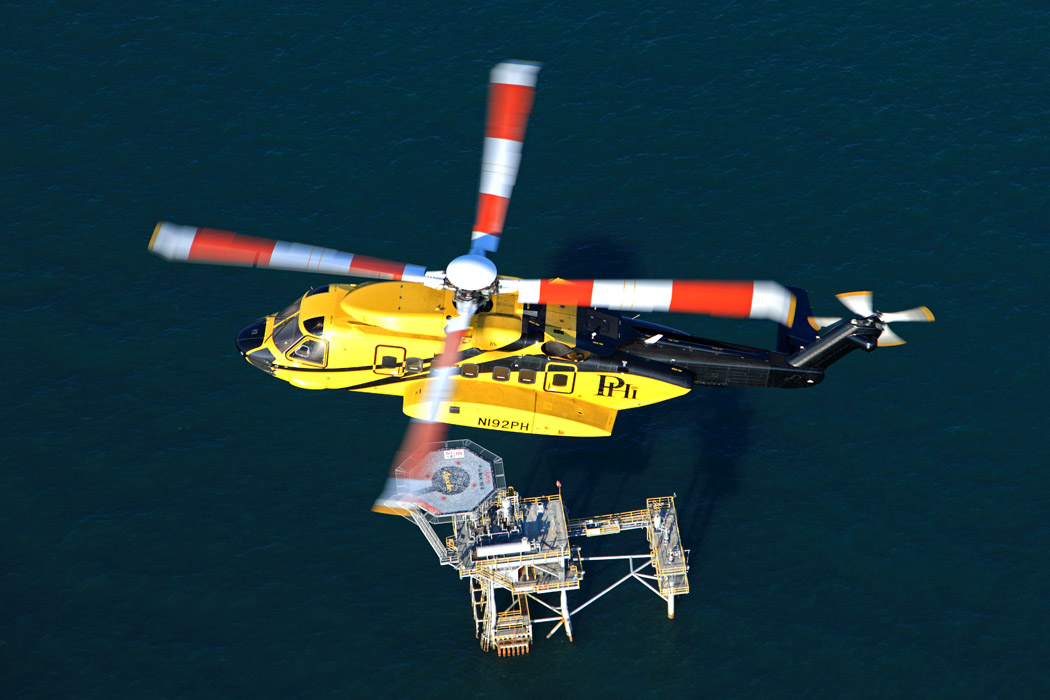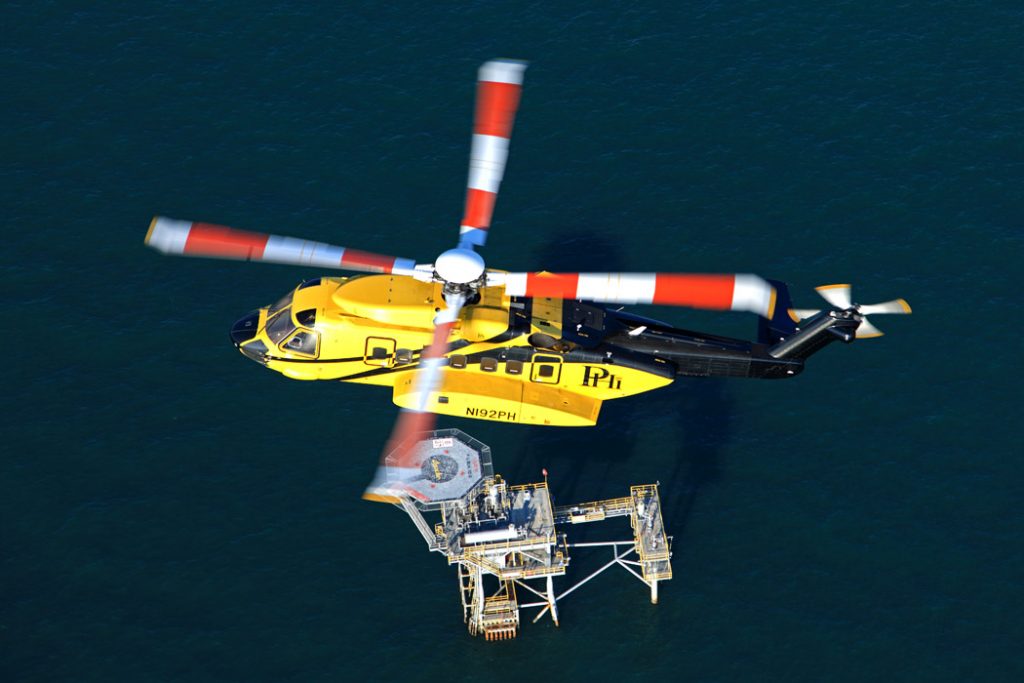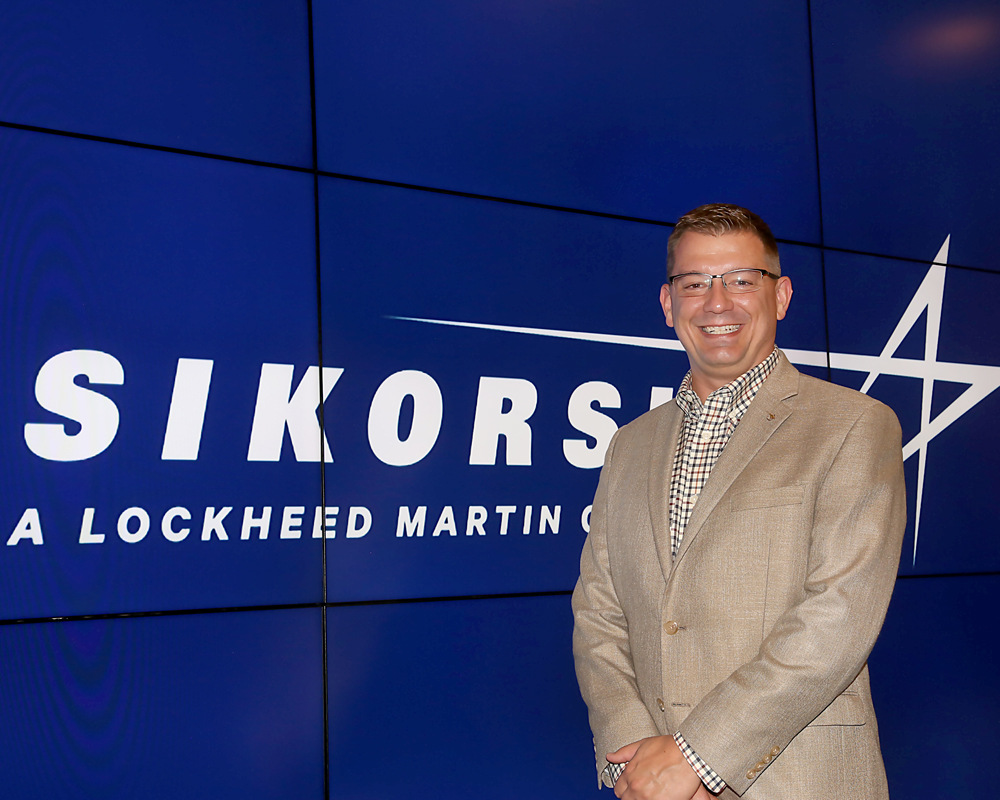Down market – David Martin on how Sikorsky is weathering the downturn

A PHI Sikorsky S-92A cruises over an oil rig in the Gulf of Mexico

Sikorsky has weathered the market downturn by sticking to what it knows best.
The US helicopter manufacturer is firmly rooted in the oil-and-gas and military markets – the two biggest markets for helicopter usage. With the oil-and-gas downturn going strong since 2015, manufacturers and operators are trying to find new homes for their helicopters.
The Sikorsky S92 is still the flagship oil-and-gas helicopter in use worldwide. Whilst some others are grounded, the model saw a 7% increase in flight hours last year – despite the sector’s waning demand.
When you are in a down market, it becomes more important that ever to keep your existing customers happy to keep you afloat. This has been a core tenet of Sikorsky over the last five years.
We sat down with David Martin, Sikorsky’s vice president of oil and gas, at Helicopter investor 2019 to discuss how Sikorsky weathered the oil-and-gas downturn, the company’s relationship with its customers and when we can expect an upturn.

HI: How is business for Sikorsky right now?
DM: “Across the industry we are still slow, but there are good signs. For Sikorsky, we see just slightly over a 7% increase in S92 flight hours in 2018. Whilst new orders and deliveries are still stagnant, we are seeing better utilisation of our fleet.
“To start, the oil-and-gas EMS has started to pick up a bit, the production side of our business has always been stable, but oil drillers are finding new opportunities, so we are seeing more activity going on there.
“There are also markets like Mexico that are developing, and we have secured a deep-water project there. There was a competition for helicopter service providers where various helicopter types competed to fly on this mission and the S92 won the three-year contract.”
HI: Have we seen the worst of the downturn?
DM: “I would say, hesitantly, yes.
“One of my good friends at one of the big global fleet operators won a contract recently. I called him up to say congratulations and I asked him the exact same question. He responded: “When you have been hit on the head with a hammer for three years and somebody stops, it feels good.”
HI: Why do you think, people are still choosing the S92 over competing newer models?
DM: “It really comes down to utility. When we built the S92, we built it to have utility in the oil-and-gas market. If you think about the purpose and intended utilisation, it is to transport passengers offshore. The more people you can take at once, the more efficient you can be.
“When you have a cabin like the S92’s, it creates a very positive environment for passengers. Beyond that, the S92 is certified to the latest FAA regulatory standards and has proven to be a mature, safe and reliable helicopter which is what our operators need. When they can go into service and have an asset that they can depend on that is really what provides the value to the client.
“If the helicopter doesn’t start and the replacement part isn’t there that drives costs up, people are stuck on shore, those who are meant to go out are put in hotels so it’s a tremendous inconvenience for them when a helicopter goes down. The reliability of the S92 is incredibly useful to them.
“Newer helicopters are described as incorporating ‘new technologies’, but we are struggling to see what that really is. The S-92 has been using modern HUMS with a proven back-end OEM analysis team that helps us ensure reliability across the fleet.
“Everybody is working towards future full-automation but nothing has been brought to market yet. I am not sure if there is a technical difference between a lot of the models out there right now.
“If you step back a generation to the original S76 and the Bell 412 and look at glass cockpits etc those are big differences. But I am not sure there if there is a substantial difference around today.”
HI: What are the next technological steps?
DM: “Again, that’s a profound question that the industry is struggling with. There is certainly new tech that can be brought to market, but everyone is holding their cards right now and asking: “If today is about lowest price, then new tech is not going to carry investment.”
“In the media, you can see what’s being done by the helicopter OEMs – primarily in the military markets, but to carry those through into the commercial segment where all that matters is what has the lowest price, you have to think about spending a billion-and-a-half dollars to chase that lowest price.
“We are certainly committed to the commercial market and I think Sikorsky has really shown the fortitude to stay in this market. We are not being undisciplined in our investment. We are investing in solutions for now like better support.
“Spreading our forward-stocking locations is probably the best thing I have seen Sikorsky do in the 11 years I have been there. Whilst we used to have one primary distribution hub in Connecticut or Atlanta for example we have distributed that out to four or five stocking locations.
“We are putting critical components closer to our customers’ aircraft. If they go out in the morning and their helicopter doesn’t start, we have parts closer to them. We have seen parts delivered in under an hour, the customer can place an order and it can be fulfilled as soon as the order is placed.”
HI: What is Sikorsky’s relationship like with operators and manufacturers right now?
DM: “I would say it is very good. We are all in this together – competitors or not.
“Everybody is trying to survive and do their best. What makes Sikorsky different is that at the very beginning of the downturn we got together and had a strategic discussion about how best to proceed. No one knew that in 2019 that I would be sitting to you talking about the continued downturn.
“At this point, price doesn’t really matter. If I went to customers in 2015 and tried to sell an aircraft at a discounted price and asked “how many would you like” – the answer would always be 0 as there was no demand for it.
“To try and push more products out there is nonsensical. We decided at a very early stage to focus on always making sure that the customers that have the aircraft are as happy as possible with the asset. Therefore, we started introducing the forward-stocking locations.
“We also focused on the internal mechanisms and the processes we used to process the support systems and we established an AOC in Connecticut which has helped us be more efficient. On the business development side, we have started talking to our direct customers a lot more, asking how can we help you? And how we can keep your installed fleet flying until we can see a better demand profile in the future?”
HI: Have customers been happy with the support you have given?
DM: “I think so. It does not matter about the product or industry you are in, there will always be an issue you have to deal with. And we have had our share of issues.
“The approach we take is to be open, honest and communicate frequently with our customers. When we do that it would seem intuitive, but it is not always the case. We have seen a very positive response, but there is just a fear that if information is out there then people will use it against you.
“We got over that fear a long time ago and we talk openly and honestly.
“It is a different communication strategy that focuses on the operators and users with transparency and focuses on facts. I think Sikorsky’s approach has been received well, which encourages us to continue to enhance communication. This is not a time where anyone needs induced fear due to lack of information.
“I think Sikorsky’s approach seen at the beginning of the downturn was more helpful. This is not a time where anyone needs induced fear due to lack of information, there is enough of that going on as is.”
HI: What needs to change for new orders to start coming in?
DM: “There is a lot of speculation. In my simplistic view, it is supply and demand. Chapter one of any economics lesson.
“There is a lot of talk about oversupply in the helicopter industry right now, but there is a corresponding side to that of demand. I think demand will be the ultimate profile. There are a lot of people talking about taking older aircraft out of service – this is something that is talked about a lot in the fixed-wing space.
“But when we talk about taking out assets, I think we need to take a more patient approach that accounts for the variability in demand and the long lead time aspect of helicopter assets.
“This to me is really a demand-recovery scenario that we really need to be patient for. If every time there is a downturn in a demand we lop-off 30-40% of supply that is not good in the long run.
“When recovery does come it normally comes very rapidly. This is a very long cycle business and when new helicopters are required, it will take the supply chain 18-24 months to ramp up. If you go chopping out 30-40% of the supply, we are really going to be missing the customer needs when this turns around.
“My message here would be let’s not be so overzealous to fix this state today that we really harm ourselves later down the line.”
HI: Have you seen other companies wanting to dial back from the oil and gas market right now?
DM: “Here is what I say within Sikorsky – If you want to be a major helicopter OEM, you are going to be playing in two markets – military and oil-and-gas. If you are absent in both of those you will be half the size of what you could be.
“My counterparts in the other OEMs have a different product mix and play on the lighter side of the helicopter space – Sikorsky chooses not to. It is a very different skills set to build a large heavy helicopter than it is to build a light single-engined one. Very different.
“From an engineering perspective, the ability to design a heavy helicopter is a very different expertise and that is where Sikorsky shines. You see it in our military products, and that carries over to our commercial products. It is an interesting space to be in, but you have to be patient and accept variability.”
HI: Will we be seeing more consolidation across the market?
DM: “That is going to be an interesting thing to watch out for in 2019. You never know what could happen because those are conversations that take place behind closed doors. Certainly, it would bring about some cost efficiencies.
“It hasn’t happened yet, and I am not sure that in a market like this that people are willing to accept the prices that somebody might be paying for their company. My view would be that while consolidation would bring cost efficiency, we might not see it.”
HI: What would you say to lessors or investors put off by the oil-and-gas market?
DM: “I would say go back to the same conversations we had when you entered the market and think about those fundamental attractive qualities.
“People are continuing to fly offshore and the assets in place do have a very long life-cycle with a lot of value to them over a 15-20-year life span.
“I would say that your concerns are very understandable, but that if you can be patient then you will see a return to form.”
HI: If you had to give a message to the market in 2019 what would it be?
DM: “There is a part of the Helicopter Investor conference that has piqued my interest and that is if or what we in the market have properly learned from the downturn and what changes are necessary in our industry.
“I think that we should have a broader conversation around that.
“One of the key things I learnt at university was if you want to be successful then you need to utilise your assets. When I go around the world and see helicopters on the flight line, that is lack of utilisation.
“The airlines figured this out a while ago. If that aircraft is not flying, I am not doing the best job I can do. This is the area I think we need to look at most, but I understand there are a lot of hurdles in the way of companies understanding how to utilise their assets more frequently.”
Subscribe to our free newsletter
For more opinions from Helicopter Investor, subscribe to our email newsletter.






